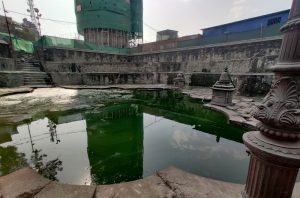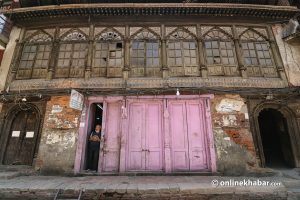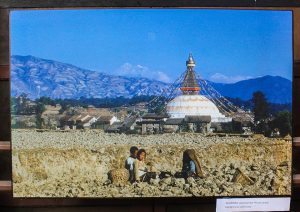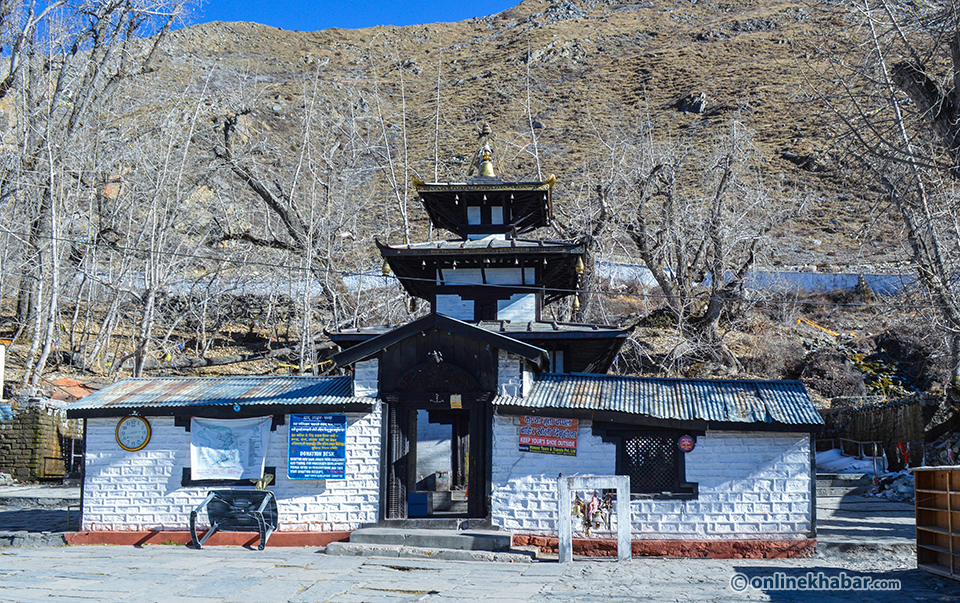
The story of Nepal’s sacred sites begins with the Himalayan orogeny—the geological process that gave rise to the mountains. This tectonic display, driven by the collision of the Indian and Eurasian plates, has formed not just the highest peaks on Earth but also a wide array of rock formations that have influenced human settlement distributions. As people migrated and settled within these valleys and hills, their livelihoods became inseparably linked to the land’s geological prosperity.
The high mountains provide a sense of protection and the fertile valleys offer sustenance due to which ancient Nepali civilisations thrived. The Himalayas’ mineral resources became the cornerstone of growing societies that fostered trade, art, and the crafting of tools and structures.
As these early populations thrived, they found both resources and divine inspiration. The mountains resembled the realm of gods and engaged people in both body and spirit. As a result, countless temples were constructed, each reflecting the society’s spiritual aspirations and the geologic richness of their locales. The selection of temple sites was not arbitrary but deliberate, placing them on elevations safe from flooding, near life-sustaining springs, and amidst landscapes offering natural protection.
These sites often correlated with times of human prosperity and major population bursts, particularly during eras of peace, wherein the interplay of geology and spirituality reflected on fertile grounds.
Historicity of temple construction
Historically, the development of human civilisations and the propagation of temples in Nepal are closely associated with various regimes of kings and rulers. Each time frame saw a different focus on temple-building, often to legitimise royal authority, create places of communal gathering, or express devotion to particular deities.
The construction of temples soared during the reign of powerful dynasties like the Licchavis and the Mallas, who left behind a legacy of grandeur and devotion carved in stone. The Licchavi era (400-750 AD), reflected the art and culture in the carvings and architectural marvels found in the valley’s oldest temples.
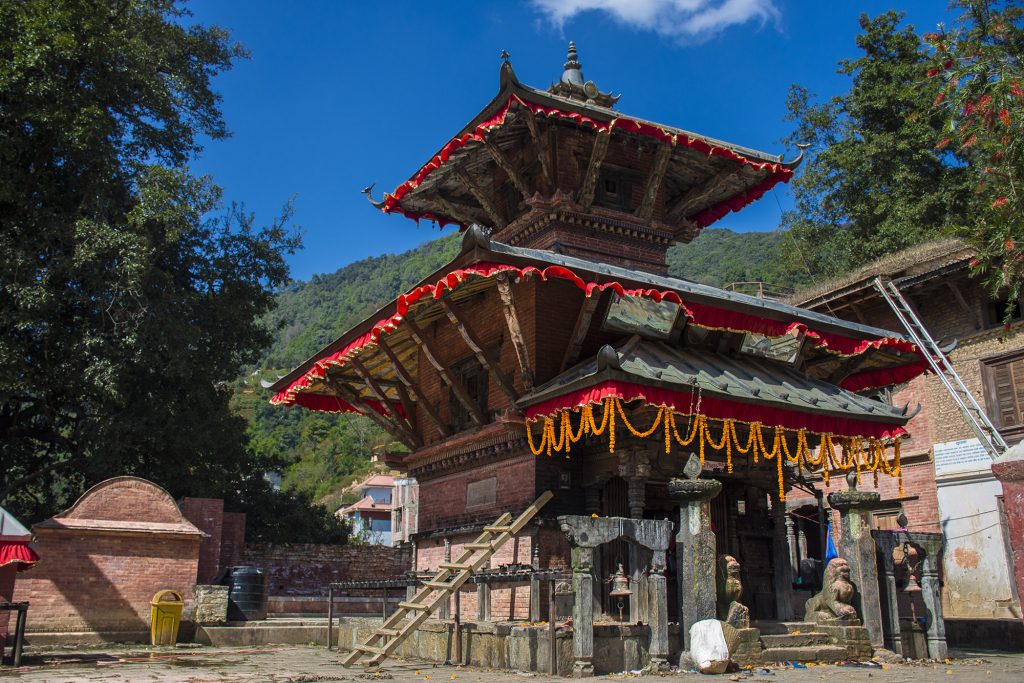
The Malla dynasty (1200-1769 AD) pushed the trend of temple construction throughout the kingdom. The geological significance of temple locations in Nepal is complex, often aligning with mountains or hills, which is a reflection of the spiritual beliefs and astronomy of the communities (Tanudirjo et al., 2019).
In modern times, the unification of Nepal under Prithvi Narayan Shah further integrated the various cultural and religious practices across the nation’s vast geological variety. This era saw an increased establishment of temples as centres for social and cultural events.
During the Rana regime, although a period known more for palaces and administrative buildings, there was also continued support for the maintenance and construction of religious sites, stirring the relationship between the land’s richness and the godly.
The cultural prospect of temple-building in Nepal and the population influx is thus a living history book. Each layer of rock narrates its tale from the ancient marine sediments of the Tethys Sea found in the Lesser Himalayas to the phyllites and quartzites of the Seti Formation, and the gneisses and schists of the Higher Himalayas.
These rocks have witnessed the cultural evolution and the growth of religiousness. Temples in Nepal, therefore, are more than mere structures of worship—they are milestones of human progress burrowed in the Earth’s geological records. They stand as testimonials to the coexistence of civilisation and nature, where the orogeny that sculpted a nation’s topography also embraced its spirituality.
Geological significance
Nepal, with its breathtaking Himalayas and vibrant culture, is a land with an awesome conjunction of spirituality and geology. Here, temples symbolise religious devotion and an intimate connection between the land’s geological history and the godly. The story within each temple is shaped by the very ground it rests upon, revealing a lesser-known narrative about the Earth’s transformative power and its impact on human belief. To understand the relationship between the two, this study incorporated the open street map of religious sites across Nepal and the geological formations they lie on in the Quantum geographical information system (QGIS) to understand the significance of temples in various geological formations.
The most recently formed formation hosts the majority of the nation’s temples at 3,346. This young geological stage is marked by fertile soils of terai with lush landscapes. Here, temples resemble the Earth’s fertility and richness of biodiversity. Seti Formation, with 665 temples, aligns with human desires for stability and longevity resting upon rocks dating back millions of years. These rocks are mostly used for construction, decoration, and grinding stones in mills. The temples within the Higher Himalaya Formation (318) and the Tistung Formation (238) are praised for their elevation and their foundation upon gneisses and schists.
These ancient, metamorphic rocks tell stories of transformation under extreme forces, correlating with the spiritual transformation sought by the believers. The mineral assemblages formed on such rock types under constant temperature and pressure are glorious and godly and often temples are built in such environments.
For instance, the Tamairaj Temple in Darchula lies near the fault zone and legends have it that minerals of various forms were visible within the temple in the past. Similarly, a geological structure has been named Malikarjun Thrust which passes along the region where a large temple is present.
Similarly, the Chandragiri Formation, with 39 temples, is noteworthy for its marble, a material that evokes a sense of purity and has been used for centuries in temple construction. Its natural beauty and durability make it a favoured choice for structures that are to stand the test of time. The Gneiss (41) temples are often the grandeur of the land itself to inspire worship. Similarly, the Sarung Khola Formation (72) and Quaternary (62) cement the relationship between the temporal and the eternal, where each geological discontinuity serves placemark for the godly.

Figure 1: Religious sites along geological faults and thrusts (Dhital, 2015) across Nepal.
Investigating the geological formations, numerous religious sites have been mapped across Nepal as shown in Figure 1 and a pattern is recognised: these holy sites are frequently found near geological features such as faults and thrusts. It is as though the temples are drawn to the very places where the Earth’s frames have shifted and warped, creating profound settings for spiritual images.
Intersection of human and divine
The locations of temples in Nepal, such as those in Upper Mustang, which is known for significant tangible and intangible heritage. It also includes monasteries, palaces, chortens, caves, and the sacred river Kaligandaki. The presence of unique geological features such as the river Kaligandaki, where sacred stones called Saligram are found, plays into the reverence of both Buddhists and Hindus, thus enhancing the spiritual significance of these locations.
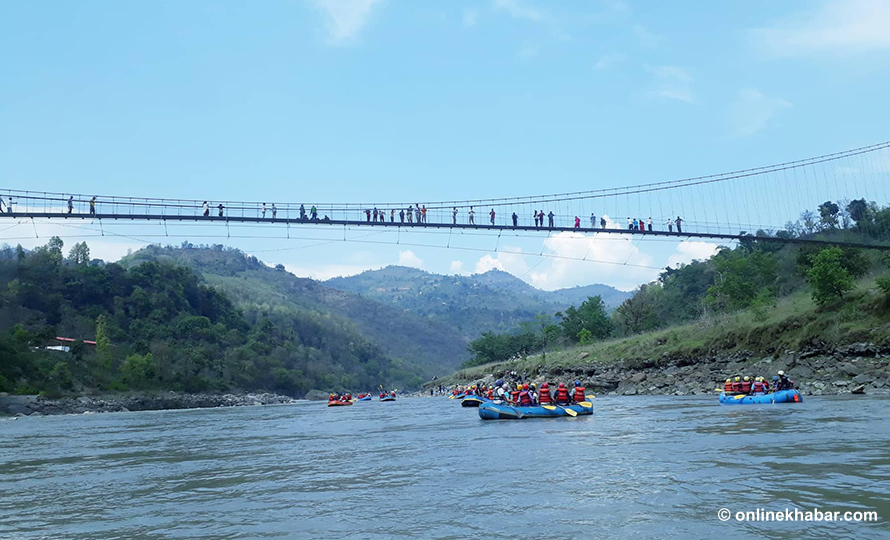
The Saligram found in the river contributes to Muktinath’s holiness, as these fossilised ammonites are considered manifestations of the Hindu god Bishnu. Buddhists also hold Muktinath in high regard, considering it a place where Guru Rinpoche meditated on his way to Tibet, thus embodying sacredness that transcends a single faith and intertwines with the area’s geology.
Despite the various factors that contribute to the selection of temple sites, the integration of these sacred places with the architectural history and craftsmanship traditions of the region is evident. The damage to physical structures due to geological and tectonic hazards has impacted the cultural and religious practices in these temples. For instance, the damage caused by the April 2015 Gorkha earthquake to UNESCO World Heritage Sites in Nepal underscored the vulnerability of such temples and the need for technological protection methods.
The attractiveness of these sites and the harmony of the temples with the natural landscape also play a crucial role in their selection of locations. Historical settings, such as the need for protection and the victory of certain religions, further enhanced the conservation of these sites.
This correlation of sacred sites with geological features indicates that the decision to build temples in certain locations is not random but deeply connected to the natural significance and its history.
Geology in Nepal is not merely a subject of scientific study but a foundation of the holy, shaping the background against which human spirituality dwells. Understanding this connection between the land’s geology and human purity can enrich our responsibility for Nepal’s rich cultural heritage. It reminds us that the temples here are more than just buildings—they are expressions of the intersection between the human and the divine, where rocks and spirit meet.




